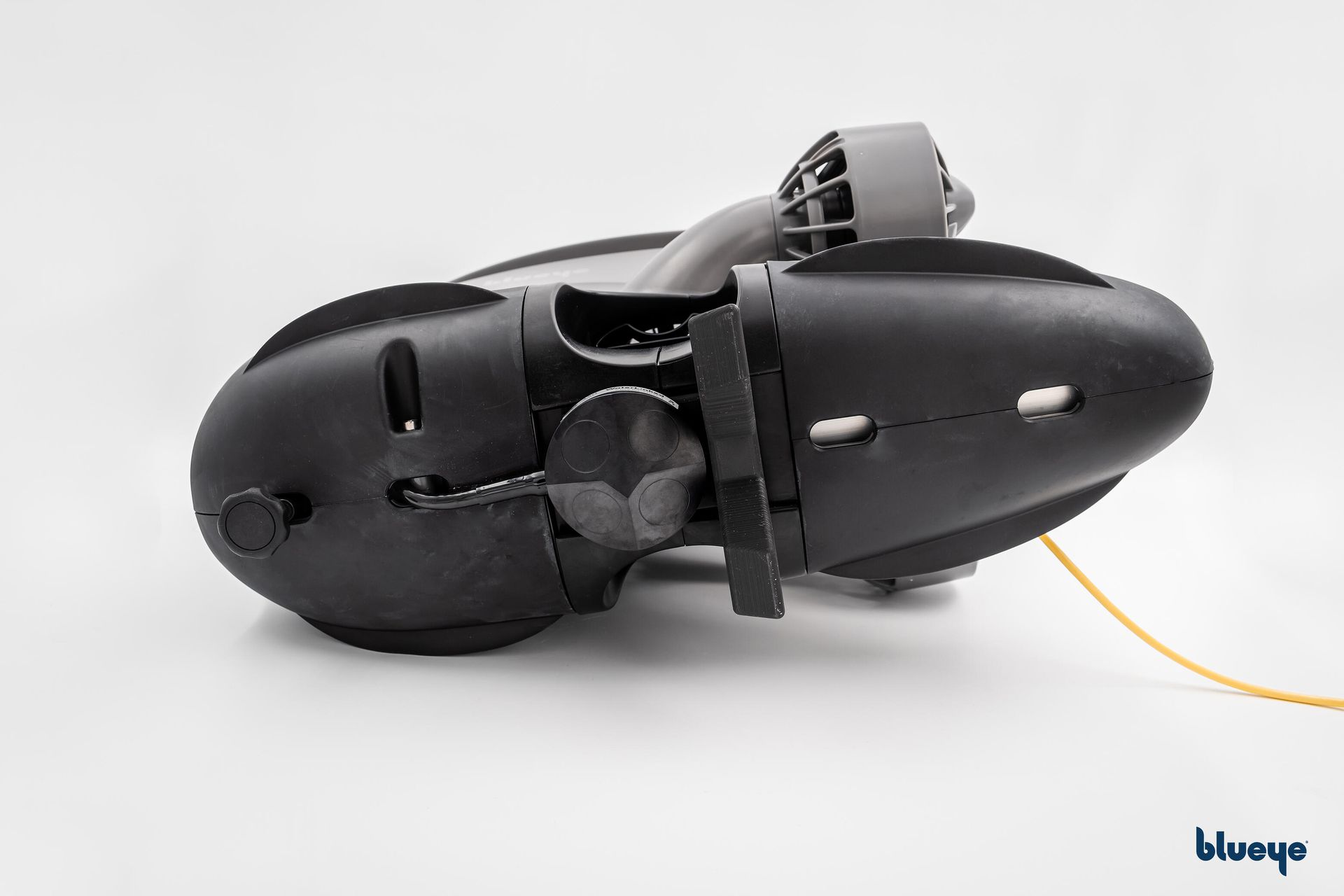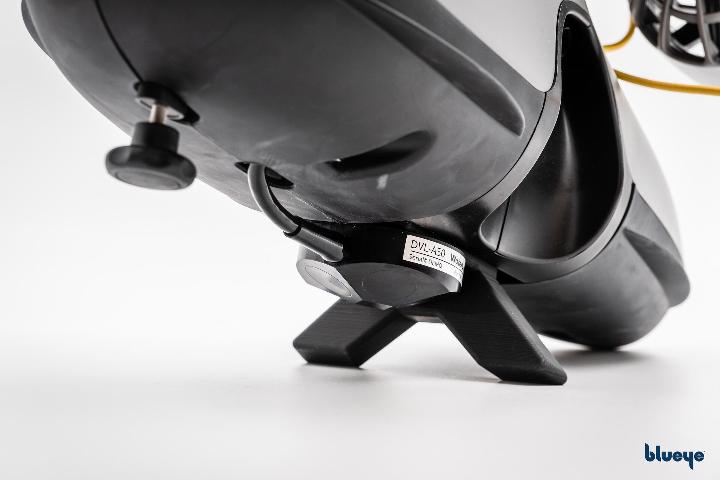Taking advantage of advanced underwater technology has previously been considered a costly and resource heavy operation. Developing such technology is time consuming and requires the brightest and most innovative minds in the business while the number of use cases has been limited to higher-revenue operations.
This is a current Blueye Robotics have been swimming against since their inception: To make advanced underwater technology more readily available. They do this through developing innovative, user-friendly design combined with advanced technology - all at a reasonable price.
Their latest innovation allows Blueye Robotics X3 ROV users to take their operation to the next level by integrating the X3 with a Water Linked DVL A50.
Connecting the DVL - Plug and play
When Blueye Robotics create a plug-and-play integration, they are not playing around. The Blueye X3 ROV, their top-spec vehicle, allows for up to three peripheral devices to be connected at the same time. The peripheral devices are connected to one of the three available guest ports, ensuring seamless plug-and-play integration.
To facilitate this convenient, smart pairing of the DVL and the ROV, Blueye Robotics have developed a proprietary smart connector. Blueye Robotics’ smart connectors communicate natively with their ROVs’ software to quickly identify what kind of device has been connected and will update the app interface accordingly; instantly giving you full control over the added functionality at the tip of your fingers.
Give your X3 a whole new arsenal of capabilities

As you might already be aware, the DVL A50 offers a wide array of functions to enhance the control and navigation capabilities of your vehicle.
Now that Blueye Robotics have done all the heavy lifting for you, these capabilities provide many good reasons to give the X3 ROV paired with DVL A50 a serious consideration.
Station Keeping
ROVs are utilized for a broad range of tasks and operations - a truly versatile tool that can be used across many applications. A challenge most ROV operators face on a regular basis is to ensure the static positioning of the vehicle. Whether you are carrying out visual inspections and require a continuous live streamed video that retains focus on one specific object or you are relaying the controls of the ROV to a colleague to relieve you, keeping the vehicle static in a given position is virtually impossible.
With the integration of the DVL A50 on your Blueye X3, you are able to keep the ROV locked in one place using the sea bottom as reference. Simply push the designated button on the controller, and the ROV will stay in its position regardless of ocean currents and other external forces that are acting on the vehicle.
If you need to reposition the vehicle there is no need to turn off the station keeping. Simply navigate the ROV to the next point of interest, let go of the controls and the station keeping capability will automatically kick in and lock on to that location. Station keeping is a great function to reduce the complexity of operating the ROV and allow the pilot to focus on capturing high quality data.
“This is exactly what we are trying to do; we take the difficult tasks and find the right sensors and make them super user-friendly in our system. You can pick up any aerial drone, get them up in the air, leave the joystick and it will stay there. This is what we have made possible for ROVs as well by integrating the DVL.”
-Andreas Viggen, Senior Software Developer, Blueye Robotics
Auto-altitude
Since the DVL A50 also provides altitude measurements, you are now able to use the new control mode auto-altitude.
The auto-altitude mode allows you to lock in on a specific altitude; the distance from the seabed regardless of depth. In the digital event ‘Introducing station keeping for ROV operations using a DVL’ you can see a good visual example of a situation where this function is invaluable.
The video shows how auto-altitude can be used when inspecting piping that runs along the seabed in waters where depth varies. Since the pipe is mounted to the seabed, with the same distance between pipe and seabed regardless of depth, the auto-altitude function allows the pilot to only monitor movement on the X-axis and Y-axis since the auto-altitude ensures consistent Z-axis, or depth, positioning.
Innovative DVL Mount allows for easy integration
When the team at Blueye Robotics decided to create a flawless integration between the DVL A50 and the X3 ROV, they didn’t just develop an incredibly intuitive smart connection. They also made sure the physical integration would be trouble-free.
For this purpose, the Blueye Robotics team designed a clever bracket to mount the DVL to the X3 ROV. This bracket has two main benefits:
- Interchangeability: The bracket is easy to mount and remove when needed. No tools required thanks to a clever sliding mechanism.
- Protecting the DVL: Since the natural mounting position of a DVL is on the bottom of the vehicle, Blueye Robotics made sure to design the bracket in such a way that the DVL is not subjected to knocks and bumps that could otherwise damage the sensor.
Complement your positioning setup with a Water Linked UGPS
If you would like to make the absolute most of the navigation and positioning capabilities available to your Blueye ROV, this is for you.
Connecting the renowned Water Linked UGPS G2 to your Blueye ROV has never been easier. Utilising a bracket tailored to Blueye ROVs, the U1 locator and G2 topside kit communicates natively with the Blueye GUI and position log.
Discover the benefits of adding an SBL system to your Blueye ROV in this video created by Blueye Robotics.
Who are Blueye Robotics?
Blueye Robotics specialize in developing and manufacturing underwater drones for commercial use. You have probably seen their uniquely designed vehicles before as they all follow an exciting, functional design. Their current line-up of vehicles includes the Pioneer, Pro and X3 ROVs.
Being a fairly young company, founded in 2015, they have quickly garnered international recognition as one of the leading manufacturers of miniature underwater drones. Much of their success can be attributed to their focus on ensuring their products are versatile, affordable and not least user friendly.

